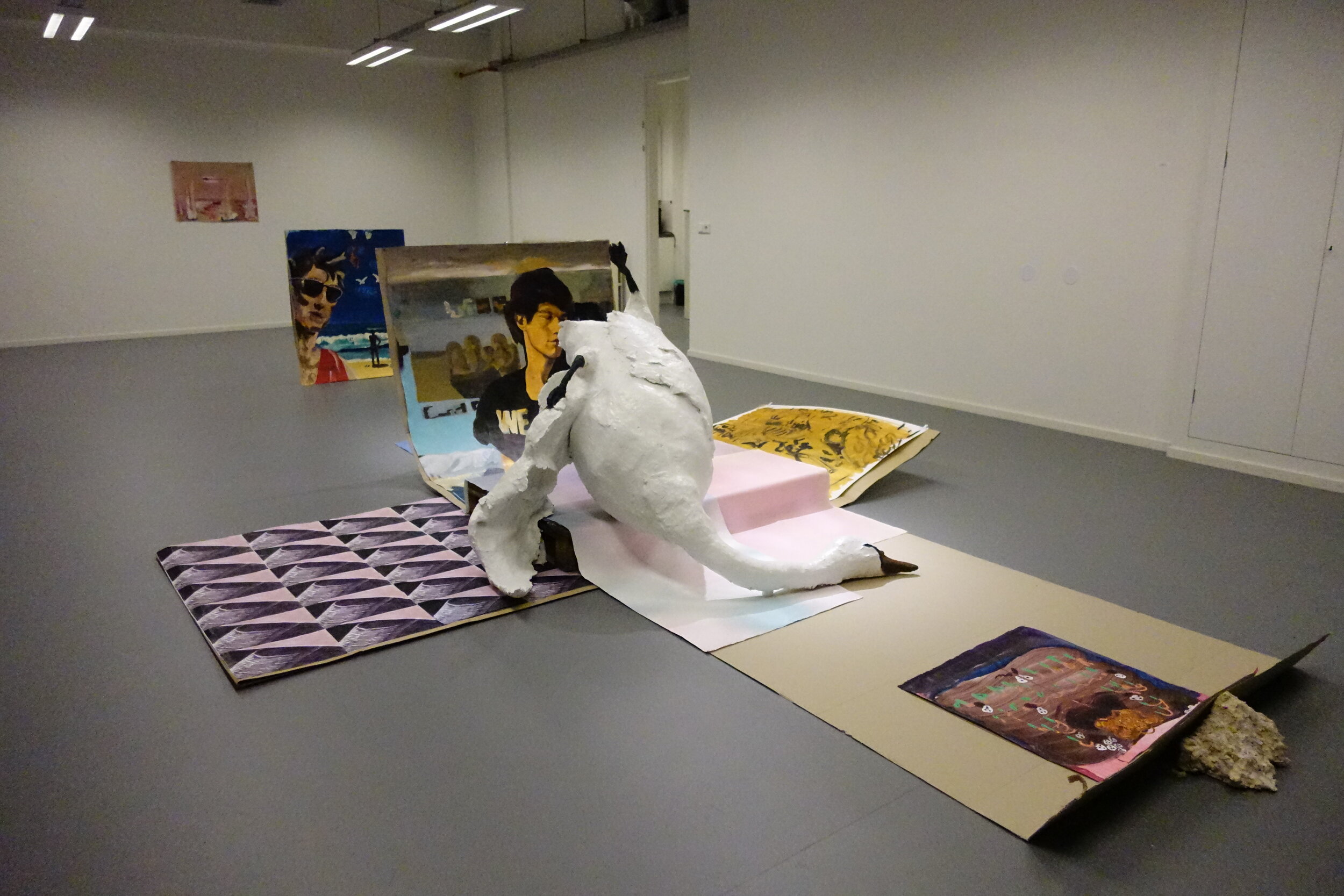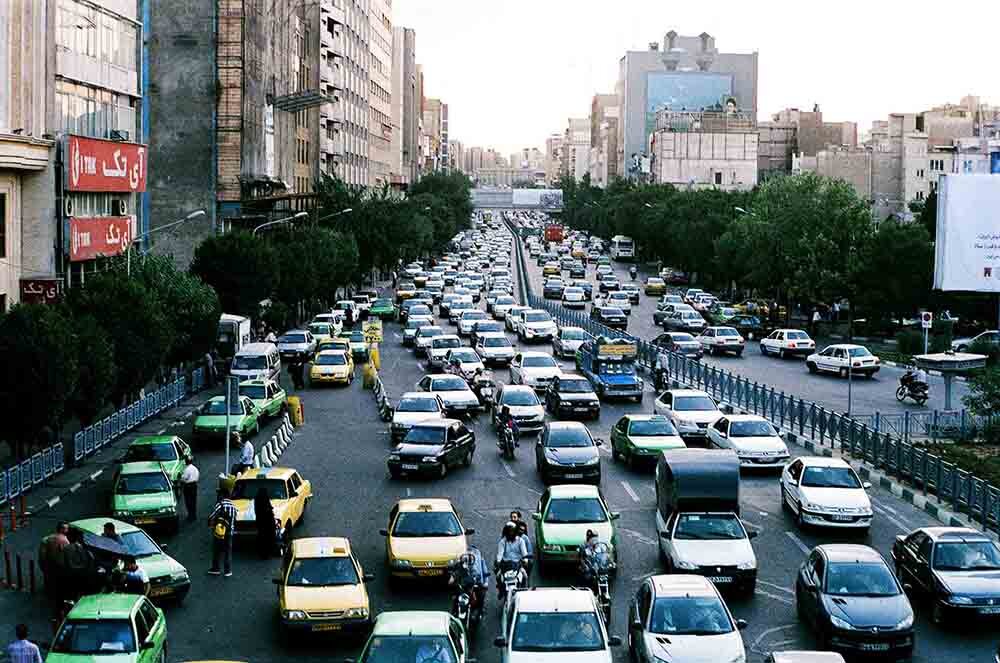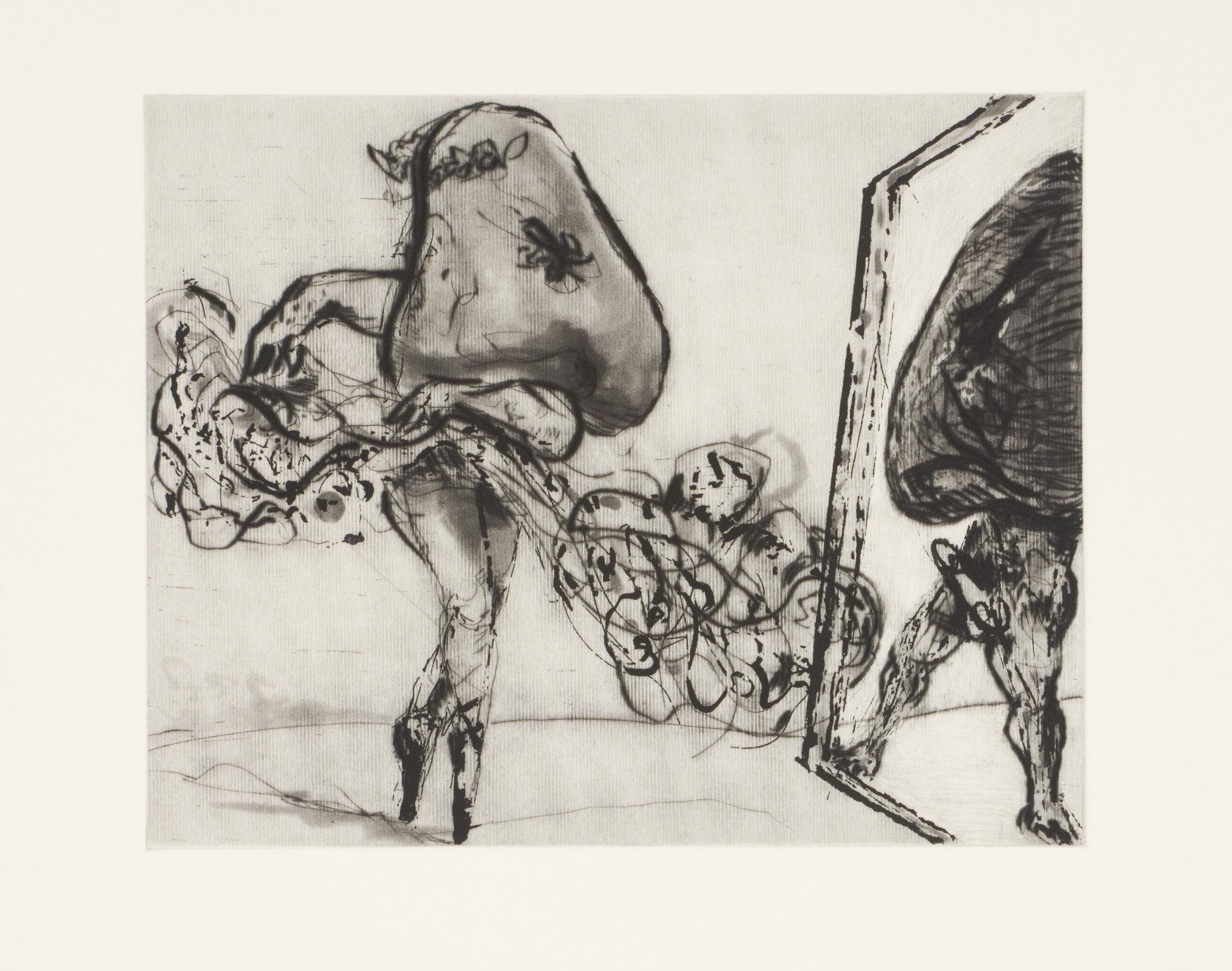
DORÉ-HAMI // دورهمی
Majid Biglari
Mehrdad Jafari
Shirin Mohammad
Sam Salehi Samiee
Arya Tabandehpoor
Sepide Zamani
No Man’s Art Gallery honored to present ‘Doré-hami’, a group exhibition with works the gallery got introduced to during No Man’s Art Pop-up Gallery Tehran, in Iran. Through its international pop-up program NMAG aims to create an alternative art world in which artists can be withheld of any circumstances that might limit them at home, enabling them to seek a maximum of dialogue and exchange with an audience abroad.
In May 2016 NMAG travelled to Iran and organised exhibitions in Tehran as part of its ninth international pop-up gallery. The gallery selected six Iranian emerging artists after mapping the Tehran art scene and exhibited their work alongside the 18 international artists they brought to the Iranian capital. The pop-up gallery became the centre of attention in the Tehran art world for the ten days that it was open and a point of departure for a series of collaborative efforts between No Man’s Art Gallery and Iranian artists and art professionals.
For the first in the series of collaborations No Man’s Art Gallery invited the following artists to exhibit their work in Amsterdam: Majid Biglari, Mehrdad Jafari, Shirin Mohammad, Sam Samiee (nominee of the Royal Award of Modern Painting), Arya Tabandehpoor and Sepide Zamani.
‘Doré-hami’ opens Friday October 14th in presence of the artists at the Nieuwe Herengracht 123 in Amsterdam.
The Farsi expression ‘Doré-hami’ is literally translated to “surrounded by each other” most commonly used by the younger generation to gather and hang out. Generally, the ‘Doré-hami’ takes place in the private sphere, which allows different rules of behaviour. Preparing the pop-up gallery in Tehran, this type of social gathering allowed the gallery team a more open engagement and interaction and provided access to a vibrant art scene driven by a young generation that experiences a post-revolution and post-war period, witnesses many social changes and gains ever more access to global tendencies in a time of digitalisation.
‘Doré-hami’ gathers narratives that touch upon a wide range of subjects and use of media such as the limitations of the medium of photography, the rejection of authorship and investigations of a collective memory. Artists present representations of daily issues, and address propaganda and nostalgic imagery in their work. They dare to celebrate ornament(ality) and decorum. Some are occupied with archival and found footage and the ambiguities of history while others show an interest in the possibilities of new technologies and digital forms of expression.
Altogether the exhibition creates a space to share stories and continues the dialogue in Amsterdam that started in Tehran. Emphasising the ‘Doré-hami’ as an occasion to introduce the artists and a tiny fraction of the vivid Tehran art world to the Dutch audience.
Press:
Zes Iraanse kunstenaars tonen werk, het Parool, Bien Borren
No Man’s Art Gallery in Teheran, Mister Motley

NMAG Tehran
Arya Tabandehpoor (IR) | Bertrand Peyrot (FR) | Hu Xing Yi (CN) | Julie Nymann (DK) | Lehlogonolo Mashaba (SA) | Lindokuhle Sobekwa (SA)| Majid Biglari (IR) |Mattijn Franssen (NL) | Maxim Santalov (RU) | Mehrdad Jafari (IR) | Merijn Kavelaars (NL) | Mette Colberg (DK) | Mia Chaplin (SA) | Mitchell Gilbert Messina (SA) | Mongezi Ncaphayi (SA) | Olivie Keck (SA) | Pebofatso Mokoena (SA) | Ruben Cabenda (SU) | Sam Samiee (IR) | Sepide Zamani (IR) | Shirin Mohammad (IR) | Simone Engelen (NL)
©Lindokuhle Sobekwa, No Man’s Art Gallery 2016
NMAG is known for opening pop-up galleries in unconventional spaces. And staying true to its traditions the gallery opened its doors Iran in May 2016, in an abandoned house on Ghazali Street. No Man’s Art Pop-up Gallery Tehran was a fact, kindly made available by the Pejman Foundation.
There was plenty of speculation about this location’s former function. The building had been vacant for a long time; cockroaches, dust and rancid attic smells dominated the old house. Once we had discovered the dark basement filled with graffiti and an odd little panic room in its interior, our imaginations ran wild: was this an old fetish club, a place for secret gatherings, or maybe a bomb shelter? Some realists amongst us said the little room was an alternative fridge, a typical feature in old Iranian houses. The temperature in that specific chamber was indeed a contrast to Tehran’s summer heat. Not knowing its exact old purpose, we were faced with the challenge to transform three floors and a courtyard into a welcoming presentation space.
Once the old carpets were removed, the walls repainted, light installed and everything thoroughly cleaned, the house changed into a beautiful non-white cube exhibition space. Zohreh Deldadeh, co-curator of the exhibition and I decided to assign a different room to each artist physically present, encouraging them to interact with the architecture of the space.
“Fountain For a City that doesn’t Rain a Lot “, 2016, Mitchell Gilbert Messina, mixed media. © Farshid Ayoobinajad
South African artist Mitchell Gilbert Messina made a very sensitive work. He came up with the idea to build a fountain in the courtyard that camouflages into the cityscape while maintaining an ever-flowing water spring, based on the patio’s pronounced drainpipe. Fountain For a City that doesn’t Rain a Lot was the first work to come across when entering the exhibition, together with the tilted iron Home (2014) of Majid Biglari, a reference to the exhibition’s host.
“Home”, 2014, Majid Biglari,100 x 100 x 150 cm Iron. © Farshid Ayoobinajad
Visitors would then spiral down the stairs, entering the basement where Arya Tabadenhpoor’s robotic Tree series (2014) would be activated once sources of movement were detected. In his work, Tabandehpoor explores the limits of the medium of photography, questioning the necessity of authorship through the usage of various archives as well as of analogue presentation methods.
Two big rooms in the basement and the smaller – and yet unidentified – room were the spaces of Sam Samiee, Sepide Zamani and Magid Biglari. The three artists not only interacted with the space, but also with each other: a baroque installation of Samiee’s three vibrant, candy coloured paintings presented in triangle form with its zenith facing Zamani’s cross-formed Flower (2014) of paper maché.
“Flower”, 2014, Sepide Zamani, mixed media. © Farshid Ayoobinajad
The works displayed by Samiee were a variation on his series The Unmaking of the Bedroom, which has been exhibited in different locations with unique contexts since September 2015. “It will be painting all over the place. #dead #boys #symbolising #motherhood #de-symbolising #masculinity” Samiee states. On the back of Samiee’s Crucifixion According to Act of John and Quran II (2015), Biglari projected Memory (2014), a video that portrays the destruction of an iron tank, a house and a bomb. Biglari strips down symbolic imagery to a bare structure, which is then finally reduced to a bundle of useless metal.
The installation was monumental and political, but at the same time whimsical and playful. Moreover, the ceiling’s low arches deliberately suppressed its monumentality. It all felt too small. The visitor’s presence and movement within the space created a refreshing dynamic.
Back to the ground floor, Merijn Kavelaars did what he does best: uncompromisingly occupying the space by leaving his paint traces behind on the exhibition floor. Next, Tabandehpoor’s Portrait series (2014) shed light well-known Iranian photographers and image-based artists. Tabandehpoor used a criminal database to create mental portraits of fourteen unrecognizable artists faces.
Artist Sam Samiee and art critic Arie Akkermans in front of Samiee’s installation “Crucifixion According to Act of John and Quran II, 2015
Left: “Nyaope” series, 2013-5, Lindokuhle Sobekwa, 40 x 60 cm, Edition 8+2AP. Right: “A Scripted Life”, 2016, Simone Engelen. © Farshid Ayoobinajad
On the first floor, visitors were drawn to Nima Pourkarimi’s Umchunga, a soundpiece that accompanied Shirin Mohammad’s video displayed in a completely dark room. War No.2 (part of her “War series”) is a collection of found footage from the Iran-Iraq war, which focuses on fragments of Iran’s collective memory in a non-conventional way. By deconstructing the footage, abstract details become prevalent, giving a more artistic – and less dogmatic – description of the (non-physical) experience of war.
The following room hosted Lindokuhle'Sobekwa’s Nyaope Series, which revolves around the life of nyaope-addicted youth in Thokoza, Johannesburg. It powerfully portrays a loving representation of their day-to-day life. Another approach to portraying daily life is A Scripted Life by Simone Engelen, who asked others to direct her life for 24 hours. Whilst following the scripts, Engelen went out for dinner with a mirror, joined the Hare Krishna, drank Ayahuasca and shaved her head to get a tattoo saying ‘everything is temporary’.
The third – and last – room of the first floor was the site for The Room, an animation by artist Ruben Cabenda in which he examines the effect that the legacy of slavery has had on the Surinamese population, and the continuing colonial legacy that is still engrained in the nation’s everyday life. Cabenda is preoccupied with the manner in which people engage and disengage with their cultural heritage, and how this influences their idea of ‘self’. On the last wall, Mehrdad Jafari’s drawings were displayed. Puzzlingly beautiful and imaginative, the images comprise a collection of figments of the artist’s life, serving as a diary; dreams, life, ideas, anger, everything comes and goes in his own miraculous world.
“Memory” Series, 2014, Majid Biglari, Iron. © Farshid Ayoobinajad.
This particular exhibition on the Ghazali Street was a memorable one. In the end, the past of the decaying location was brought to light: it turned out that the house had been given to a soldier by Reza Shah, founder of the Pahlavi dynasty. After the soldier’s passing, craftsmen occupied the space – and the small room had indeed a refrigerating function.
No Man’s Art Gallery likes to thank all visitors, friends, supporters, and everyone in Iran who has helped, advised and encouraged us; and, of course, the artists who made this exhibition.
Press:
No Man’s Art Gallery in Teheran, Mister Motley
©Lindokuhle Sobekwa, No Man’s Art Gallery 2016

Everything you give me my boss, will do | Lindokuhle Sobekwa
"I realized that photography wasn't all about taking pictures at weddings or graduation ceremonies. It was also a way to tell my own stories"
No Man’s Art Gallery is honored to present the first solo exhibition of young South African photographer Lindokuhle Sobekwa. “Everything you give me my boss, will do” is a portrait of the lives of Nyaope addicted youth in the photographers township Thokoza.
Lindokuhle Sobekwa is a South African Photographer born in Katlehong 1995, Johannesburg. He got introduced to Photography in 2012 through the Of Soul and Joy Project in Buhlebuzile high school, which introduced photography in a township called Thokoza. His first teachers of photography where Bieke Depoorter, Cyprien Clément-Delmas, Thabiso Sekgala, Tjorven Bruyneel and Kutlwano Moagi. Sobekwa then went to join Live Magazine as a part time Photographer in 2013. His work has been exhibited among others, at the Goodman Gallery in South Africa, at the No Man’s Art Gallery from the Netherlands, hosted in South Africa, Iran and in Norway. In 2013, Sobekwa was part of a group show in Thokoza organised by Rubis Mecenat at the Ithuba Art Gallery in Johannesburg. His essay Nyaope was published in the South African newspaper Mail & Guardian in 2014. He further got published in the Vice Magazine and the Standaard in 2014. In 2015, Sobekwa received a scholarship to study at the Market Photo Workshop where he completed his foundation course. His Series Nyaope was exhibited in the group show called ‘Free from Happiness’ which was organised by Rubis Mecenat at the International Photo Festival of Ghent in Belgium. In 2016, he left for a Residency in Tehran Iran, with the No Man’s Art Gallery. It is in the same year that his work was displayed in the Travelling exhibition Free from my Happiness, in Perignem in Beernem Belgium and at the Johannesburg Art Gallery in South Africa. His work features features in the book ‘Free from my Happiness’ edited by Bieke Depoorter and Tjorven Bruyneel . He also takes part in the group show called ‘Fresh Produce’ organised by Assemblages and VANSA at the Turbine Art Fair in Johannesburg. Lindokuhle Sobekwa is also an Assistant of the Of Soul and Joy Project Manager as well as a trainee at Mikhael Subotzky Studio. In 2017, Sobekwa got selected by the Magnum Foundation for Photography and Social Justice. The Social Justice Mentorship has drove him to develop a project close to his heart, about his sister Ziyanda. In 2018, he received the Magnum Foundation Fund to continue with his long term project Nyaope. He is currently working on a collaborative project with French Photographer Cyprien Clément-Delmas, in Daleside South Africa. In 2018 he join Magnum Photo as a nominee.
Press:
Lindokuhle Sobekwa & Mikhael Sobotzky, Vice
Lindokuhle Sobewka, Magnum Photos

The Collaborative Spirit
William Kentridge, senzo Shabangu, Zwelethu Machepha, Atang Tshikare, Bevan de Wet, Cloudia Hartwig, Fred Clarke, Gary Stephens, Gawie Joubert, Isaac Zavale, Lehlogonolo Mashaba, Lisolomzi Pikoli Minenkulu Ngoyi, MJ Turpin, Mongezi Ncaphayi, Mr Lean, Niall Bingham, Nolan Oswald, Dennis Ross Passmoor, Sindiso Nyoni, Stephan Erasmus, Themba Khumalo, Yael Feldman, Zolani Siphungela, Nonpumelelo Ngoma, Lebohang Sithole, David Tsoka, Jan Tshikhuthula, Lukas Nkgweng
Print is a much loved and widely used artistic medium in South Africa and played an important role in the development of the local art history. Collaboration between (master) printers, students and artists is the foundation of print studios, where the collaborative practices create space for dialogue and exchange in artistic knowledge and skills. Print studios have fostered democratization of the artistic contribution of South African art.
All artists participating in this exhibition are connected to South African print studios that produce limited print editions of local and international artists. A wide array of printmakers will be exhibited, including Lehlogonolo Mashaba, Mongezi Ncaphpayi, Senzo Shabangu and Themba Khumalo.
NMAG is honoured to present six prints from the NOSE series by internationally renowned artist William Kentridge. The works were kindly made available by David Krut Projects in Johannesburg, where they were editioned. With Kentridge’s current multidisciplinary presence in Amsterdam, The Collaborative Spirit highlights another medium within the artist’s oeuvre.
Special thanks to ZAM and David Krut Projects















